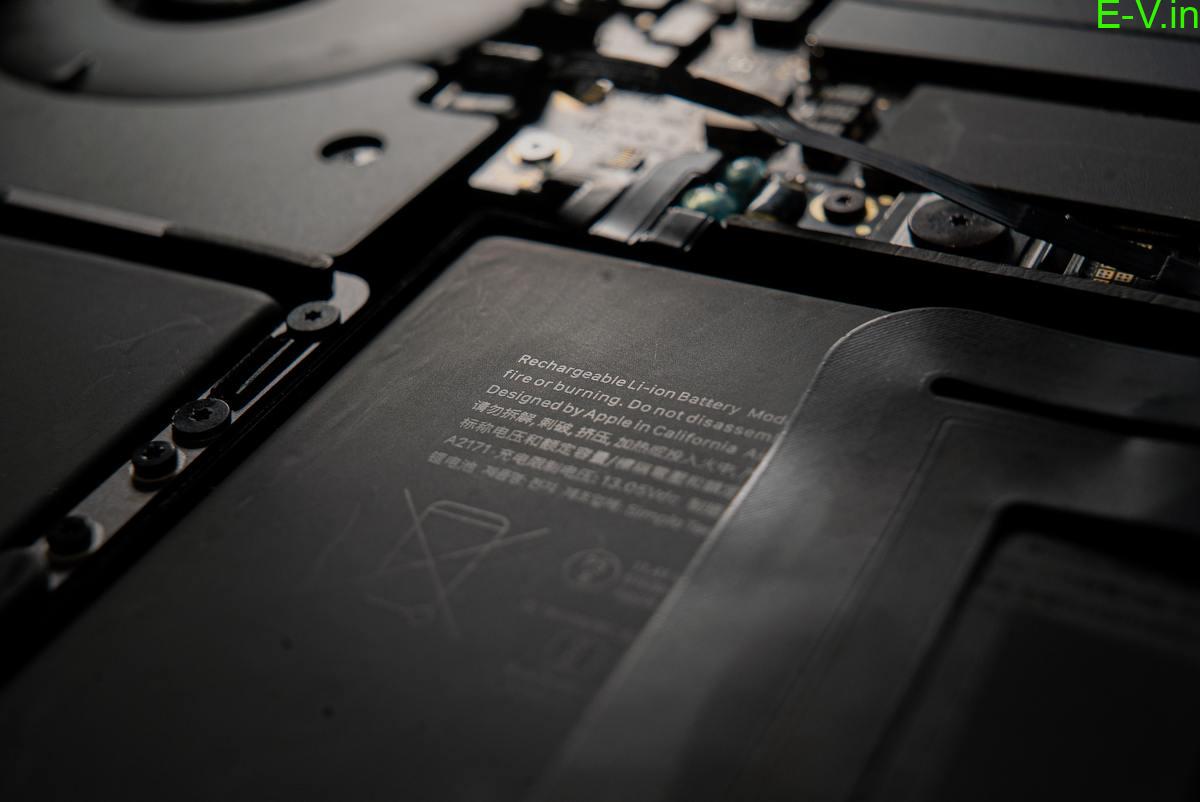
Fire risks associated with li-ion batteries & safety
The demand for lithium-ion battery-powered road vehicles continues to increase around the world day by day. Electric vehicles have now proven to reduce emissions and operate more efficiently than vehicles driven by fossil fuels. As the technological advances in energy storage systems, specifically those that are part of the lithium-ion family. Their unmatched properties such as high cycle life, high energy density, and high efficiency make them suitable for automotive applications. Read the complete article to know more about fire risks with li-ion batteries.
Fire risks with li-ion batteries
As more lithium-ion battery-powered road vehicles become operational across the globe, their involvement in traffic accidents is likely to rise. There is a risk, as in conventionally fueled vehicles, that the onboard energy storage system becomes a hazard to the safety of those involved in, or responding to, accidents. For conventional vehicles risks, we know well and it is well defined and generally accepted by society, time and education are needed to achieve this comfort level for battery-powered vehicles.
Replacing conventional vehicles using internal combustion engines with electrified vehicles (EV) is a challenge. Electric vehicles have clear advantages concerning safety as they do not carry conventional fuels onboard such as petrol or diesel, both of which are flammable
and toxic.
The damage of the lithium-ion battery is a threat to the consumers and responders as well as those involved in post-crash operations. There are many different types of lithium-ion batteries, with different packaging and chemistries but how they are integrated into modern vehicles is what matters.
To use lithium-ion batteries safely means to keep the cells within a defined voltage and temperature window. These limits are exceeded as a result of a crash or fault conditions. This matter not only concerns firefighters, but also those involved in handling damaged EVs through towing, workshop, scrapyard or recycling activities.
The lithium-ion batteries significantly contribute to a vehicle’s automotive force, called a traction battery. The traction battery is of interest as it is one of the most challenging fire risks for first responders and vehicle workshops to manage. Their high voltage (300–1000 V) and a large amount of energy stored (up to 100 kWh) can yield a significant safety hazard.
In this article, we will be discussing a basis for fire safety systems to be applied to damaged EVs. Of interest were relevant risk assessment routines and to evaluate what role integrated fire safety systems can play in providing greater occupant protection studied and analysed by Fire Technology.
Fire safety of electric vehicles
The fire safety of energy carriers is related to their fuel source. For an ICE vehicle, a common fuel is a gasoline if it is not handled or stored properly it can be extremely dangerous. The same principle applies to lithium-ion batteries, the fuel source for most EVs today. Burning LIBs have some distinct features, such as thermal runaway and ventilated flammable and toxic gases. This gives that burning EVs pose a different risk, it may not be greater than that posed by the conventional vehicles we have gotten used to.
The research is based on the bow-tie method d is employed to communicate the risk of a LIB fire in an EV to the reader, focusing on potential barriers to the threats and consequences. The event corresponds to a fire breaking out inside the LIB of an EV which results in cascading effect.
Fire first spreads throughout the LIB then the vehicle and then any flammable materials nearby. As the fire size increases so do its environmental consequences. In this situation, the cascading effects are either prevented to remove events that caused fire or t there is already exists a lithium-ion battery fire. Here the focus shifts to reduce the negative outcome and regain control over it.
Thermal Runaway
The LIBs originates from the individual battery cells that make up the battery pack, it releases the gas when abused and can ignite or cause an explosion. When exothermic chemical reactions are generating more heat than is being dissipated, the LIB enters a so-called thermal runaway.
- It causes the safe operating window to be not kept
- The battery’s voltage or temperature limits are exceeded, certain chemical reactions may be triggered inside the battery
- Which leads to an internal short circuit or increase of the internal temperature by other mechanisms
- The battery cell can subsequently fail by venting flammable gas, burn, explode or become a projectile
- It is due to the components that make up the LIB, as there is a combination of flammable fuel, potential oxidisers and heat generation during usage
Battery failure causes
- The catastrophic loss of a cell can result in even more severe consequences such as damage to other system elements, and/or human injury or death.
- Failure of a cell may be the result of poor cell design or manufacturing flaws, external abuse (thermal, mechanical, electrical), poor battery assembly design or manufacture, poor battery electronics design or manufacture, or poor support equipment (i.e. battery charging/discharging equipment) design or manufacture.
- The primary battery risks are generally a result of external or internal short circuits, high or low temperatures, overcharge or over-discharge.
- When temperatures become sufficiently high, or there is an ignition source present that ignites the flammable gases released by the battery.
Internal cell short circuits
- The most hazardous failures cause internal cell short circuits.
- This can be a result of manufacturing defects or physical damage due to dendrite growth or mechanical deformation.
- This catastrophic event may occur very suddenly and without previous warning.
- When the internal short circuit occurs the damage is often severe
- The rapid heating can trigger further self-heating and thermal runaway
This is due to the manufacturing errors, such as burrs, misalignment of the electrode package or punctured separators. The primary cause relates to the presence of particles in or on the cathode.
It presents four probable types of internal cell shorts. That is when there is contact between negative current collector to the positive current collector, negative current collector to the cathode, positive current collector to anode and cathode to anode.
Mechanical deformation and impact
Mechanical deformation may also initiate an internal short circuit and potentially result in fire and severe deformation may be a result of a certain crash or ground impact conditions. The high voltage system may be damaged, causing short circuits and arcing and it may also result in the leakage of flammable and conductive liquids.
Charge
LIBs are designed to receive and store a certain amount of energy over a specific amount of time. When these limits are exceeded, as a result of charging too quickly or overcharging, the cell performance may degrade, or the cell may even fail.
Overcharging may be realized when the cell voltage is incorrectly detected by the charging control system, when the charger breaks down or when the wrong charger is used. When overcharging, the anode material can become overly lithiated. As a result, lithium intercalation ceases and lithium metal deposits on the anode. These deposits may grow into metallic fingers commonly referred to as dendrites. As they grow, they can reach the point where they penetrate the separator and cause an internal short circuit.
Discharge
When the LIB is discharged, lithium-ions flow from the negative current collector and anode to the positive current collector and cathode. If the level of discharge becomes too great, however, the negative current collector, which consists of copper, can dissolve.
The small conductive copper particles are released in the electrolyte which increases the risk for an internal short circuit. It can also lead to the evolution of hydrogen and oxygen, cell venting and plating on the cathode. Over-discharge abuse occurs when discharging battery cells below their minimum voltage.
External Short Circuit
An external short circuit is another form of electric abuse that may destabilise the battery. This occurs when the battery is exposed to severe mechanical deformation and impact, immersion in water, corrosion and electric shock during maintenance.
Causes
Exposure to high temperatures
Thermal stability is one of the limiting factors of lithium-ion batteries (LIB) cell safety. When exposes to high temperatures internal degradation mechanisms and exothermic reactions may lead to problems. When the external temperature of the battery is higher than the internal temperature, it is heated instead of cooled.
Hazard and risk factors
- When the battery fails it may have several different outcomes for example venting, fire or even explosion.
- When heating LIBs their internal pressure builds up and eventually the cell cracks and/or ventilates or explodes.
- If the released gas comes together to create an explosive environment that is ignited it leads to an explosion.
Battery safety solutions
There are many levels of fire safety to consider in an EV such as the batteries can be designed to prevent short circuits and other malfunctions that lead to overheating and thermal runaway.
So this was the detailed information about the Fire risks associated with li-ion batteries & safety. We will also discuss are electric vehicles are safer? or EVs are more or less likely to catch fire than ICE vehicles.
(source-RISE Report)
If you are an EV manufacturer or EV Dealer or EV Supporter who want to share news related to electric vehicles on our website, please send an email to crm@electricvehicles.in
For the latest electric vehicles news, follow electricvehicles.in on Twitter, Instagram,Facebook and our YouTube Channels English, Hindi, Telugu and Tamil







